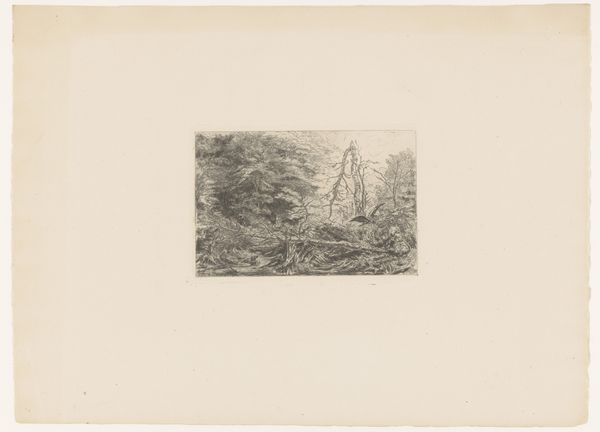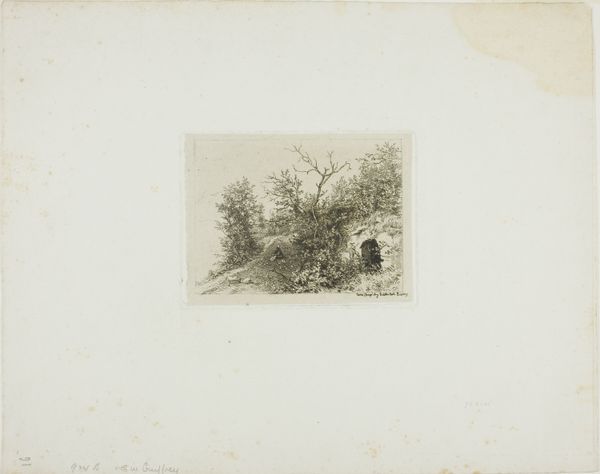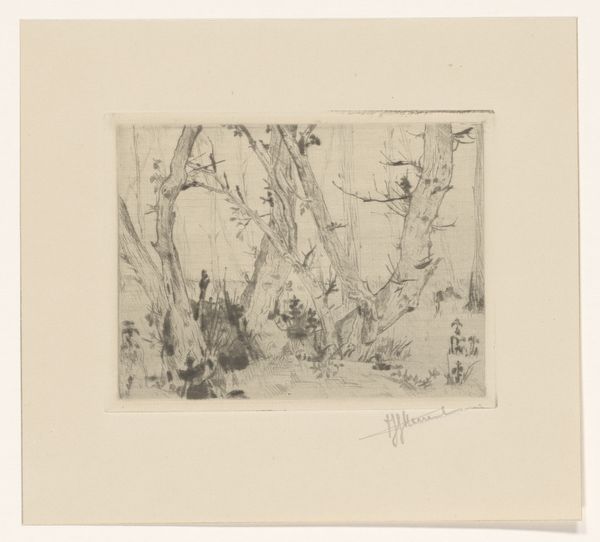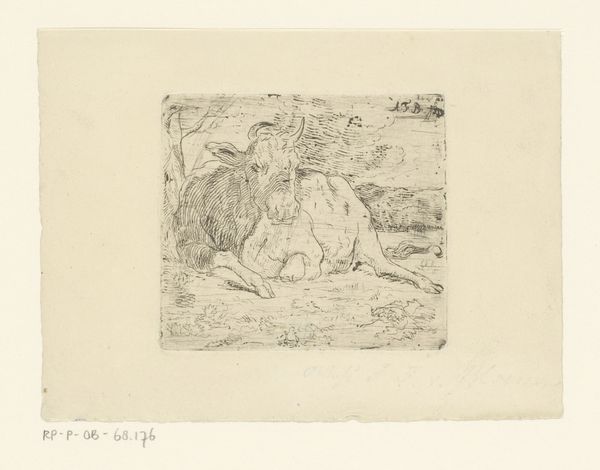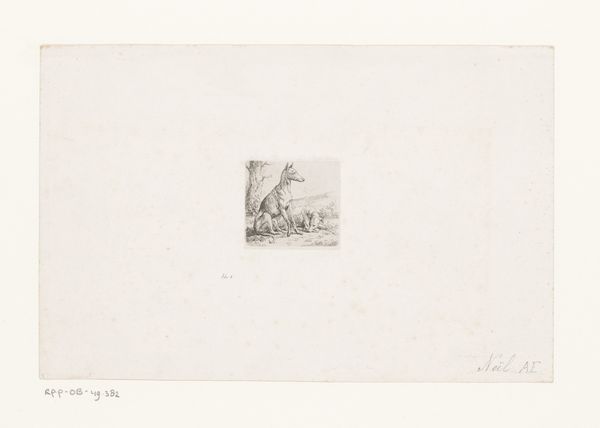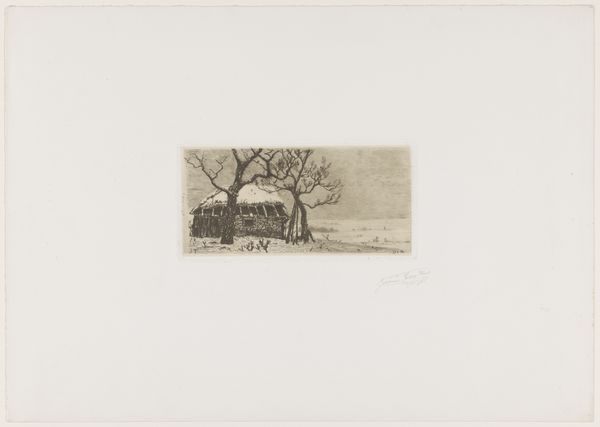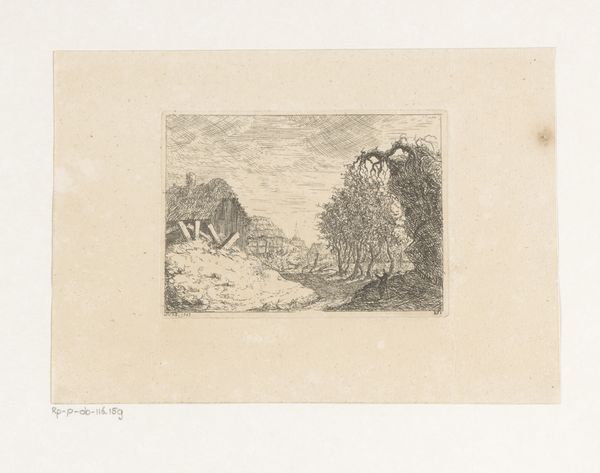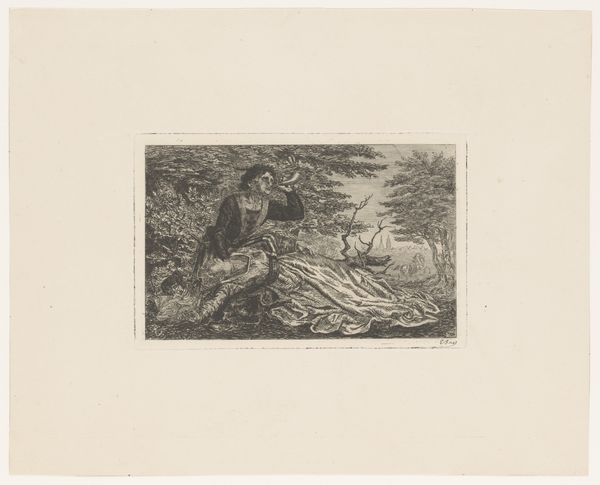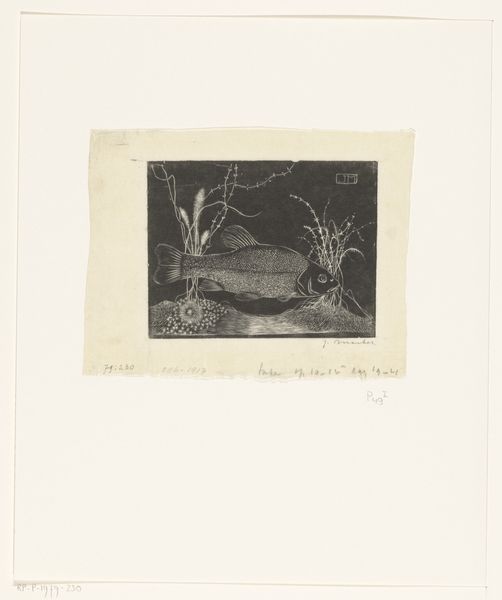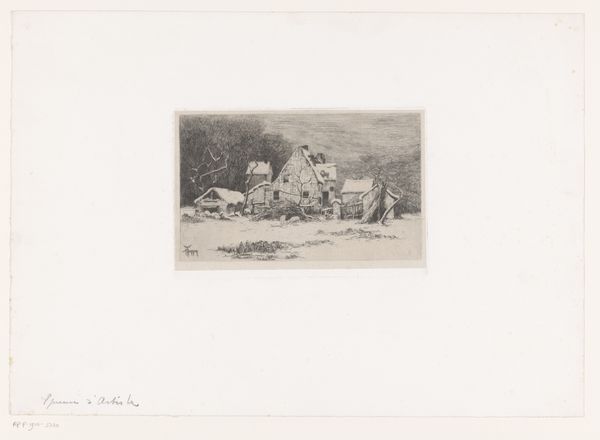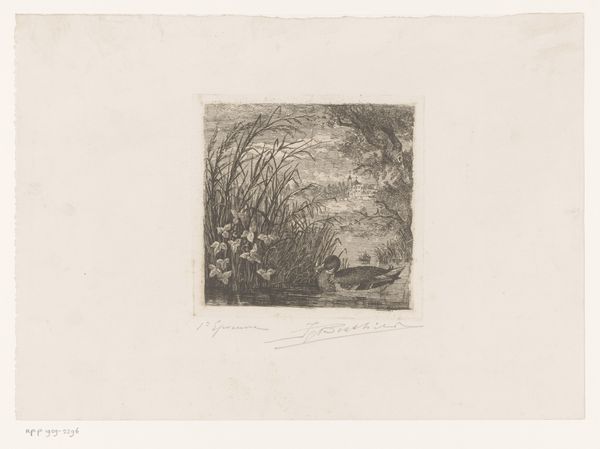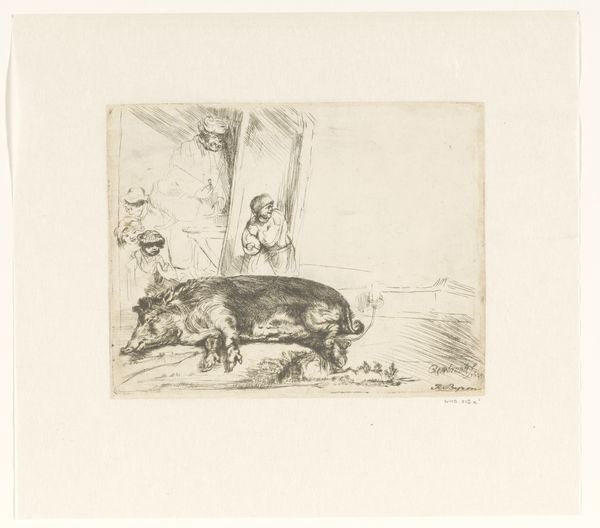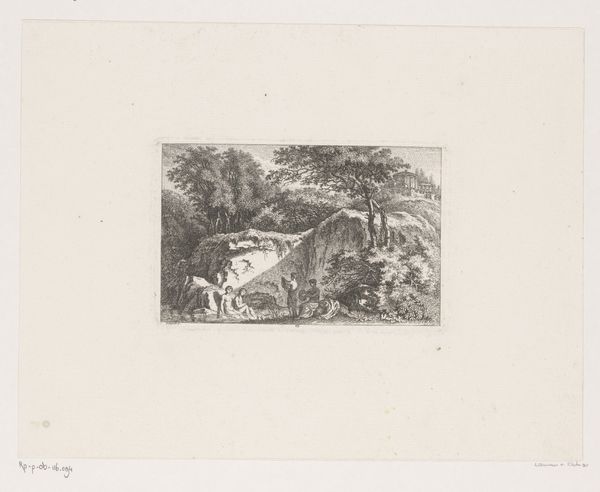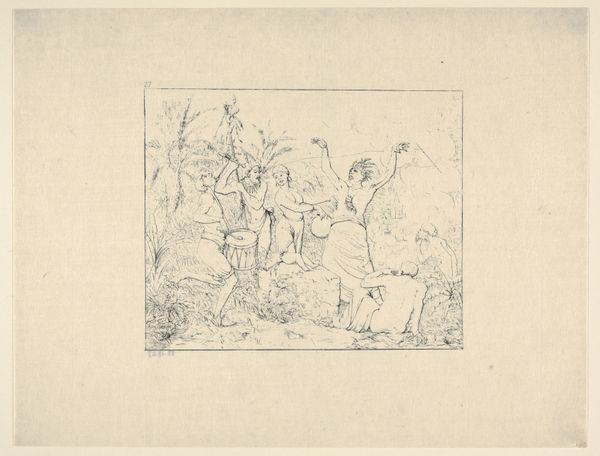
Dimensions: height 150 mm, width 204 mm
Copyright: Rijks Museum: Open Domain
Editor: This etching by Pierre Laprade, titled "Two Girls in a Grain Field," I think it dates somewhere between 1885 and 1931. It’s…delicate. Evocative, but also quite faint. What do you see when you look at this print? Curator: I see a return to pastoral simplicity, tinged with a very modern awareness of loss. Consider the medium itself: etching, a process of incising lines, of marking. What are we marking here? Is it the fleeting moment, or perhaps something more profound about childhood’s ephemerality? Do the girls become allegories? Editor: Allegories of ephemerality? That's deep! But I see them more simply, maybe, as representations of childhood leisure. Curator: Perhaps, but leisure in what context? The presence of the grain field, especially as a recurring motif in art, is rarely neutral. It can symbolize sustenance, growth, but also harvest—the reaping of what was sown. Note how Laprade uses line—it isn't just descriptive, it's expressive, almost agitated. Editor: I see that now. The lines are much looser than I initially registered. Almost frantic around the edges of the field…and that old windmill is kind of sad. It makes me wonder if this idyll is already being threatened. Curator: Exactly! There is nostalgia here, but it's self-aware, critical even. How do these symbols shape the meaning for a contemporary audience versus, say, a viewer in 1900? Editor: It sounds like understanding the context of certain visual motifs definitely enriches the viewing experience! It’s not *just* two girls in a field. Curator: Never just. Everything carries the weight of cultural memory, and images are exceptionally good at triggering those memories. They linger long after we expect.
Comments
No comments
Be the first to comment and join the conversation on the ultimate creative platform.
